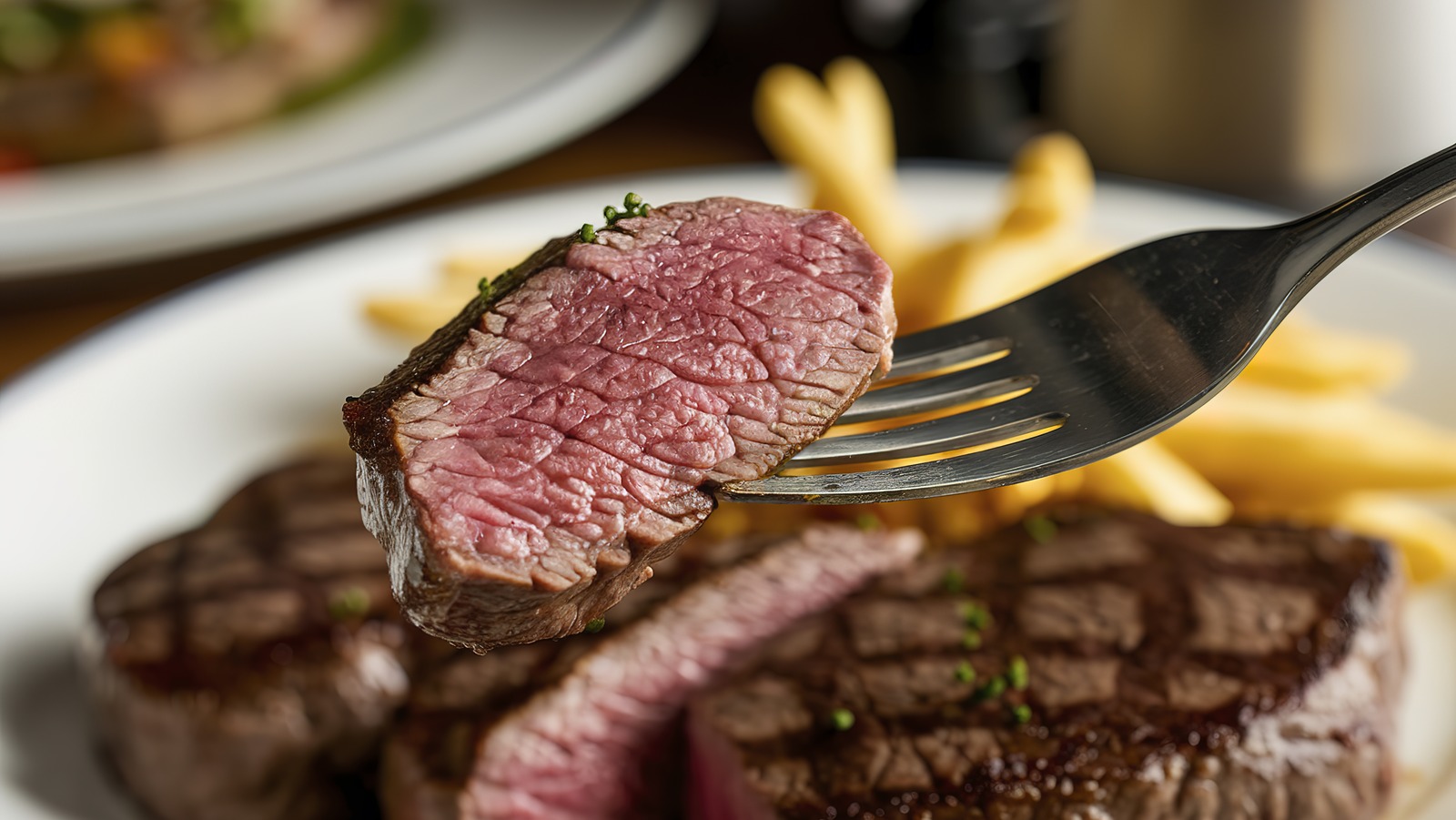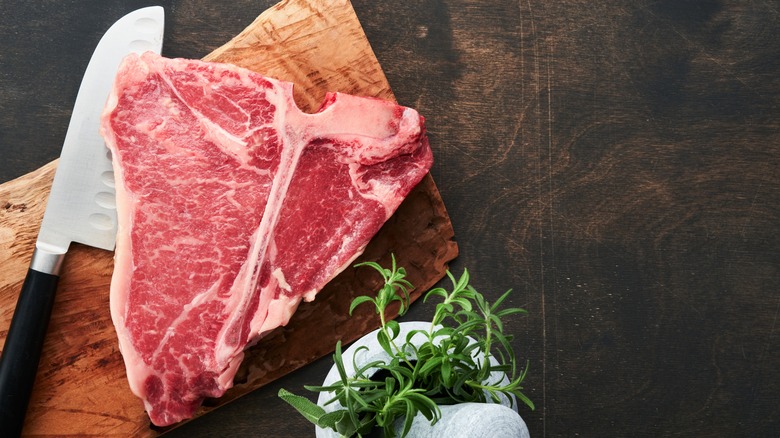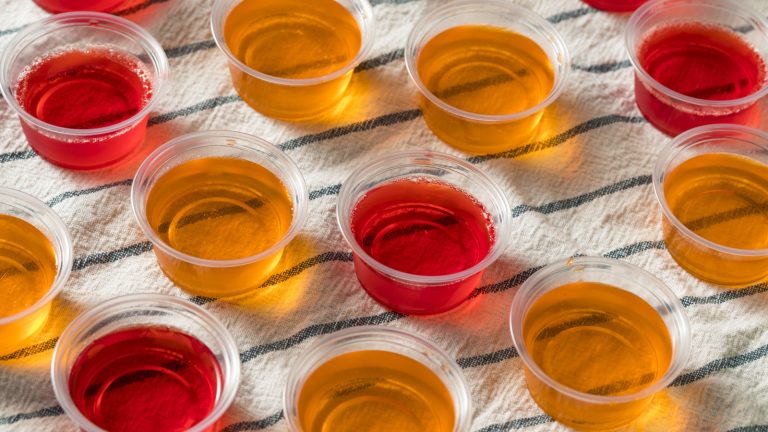If you’re anything like us, going to a steakhouse was always reserved for special occasions like anniversaries or birthdays. Something about the fancy tablecloths, extensive wine menus, and mouth-watering steaks just always makes for a dazzling evening. While enjoying your food, you may be riddled with the thought of how steaks, which are essentially just big chunks of meat, can somehow taste so good at the restaurant, but only decent when made at home. Food Republic spoke to Kathleen Smith, home cooking expert & recipe developer at Gonna Want Seconds, to pick her brain on why they seem to be so much better when ordered from a steakhouse.
“Steakhouses rely on high-heat equipment such as commercial broilers and open-flame grills to create that signature crust,” Smith said. Additionally, she mentioned that steakhouses rely on quality thick cuts of meat, as well as cooking techniques like even cooking temperatures and perfected timing. These come together to make all the difference in the result. “Combine that with seasoning know-how and a solid resting routine, and you get a steak that tastes as good as it looks,” Smith said.
Tips for making steakhouse-worthy steaks at home
When you’re looking to make a restaurant-quality steak at home, you’ll first want to choose the perfect steak at the store. Always look for quality meat, thick cuts, and plenty of marbling. Next, you’ll want to avoid the common mistakes people make when cooking steak, like not patting the meat dry. Additionally, forgetting to infuse flavor is a big no-no. “A lot of home cooks go too light on seasoning or skip the finishing touches,” Kathleen Smith told Food Republic.
According to the expert, what separates great steaks from subpar ones has a lot to do with the amount of salting the meat receives before cooking. A good rule of thumb is that a steak needs about five grams of kosher salt per pound. Once it’s been cooked, it’s important that you don’t skip adding some finishing flavorful touches to your steak. “I like to use a garlic-herb butter and a splash of something acidic, like lemon juice or a bit of vinegar, to brighten everything up,” Smith recommended. “That final flourish really brings the dish together.” Of course, it’s also important to let your meat rest after grilling for approximately half the amount of time you spent cooking it.






